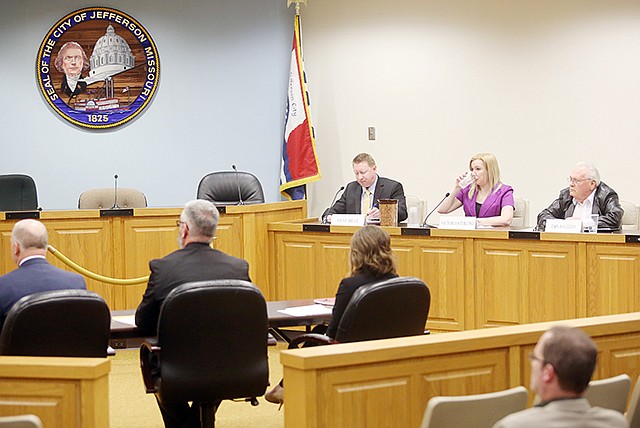School board candidates and Jefferson City Public Schools officials made it clear at Tuesday's News Tribune-hosted forum that whatever results from the April 4 election, ensuring equity between schools and better understanding what community members want will be critical for the outlook of local public schools.
On the April 4 ballot, voters will decide whether to support Propositions J and C, which present the district's two-high school plan.
Proposition J will ask voters if they want to approve a 65-cent tax levy increase to fund a $130 million bond issue to build a second high school and renovate the existing one to make it an equitable facility in terms of square footage, design and safety.
Proposition C will ask voters if they want to approve a 45-cent operating levy - 20 cents to cover needs like textbook series and mental health support within the existing school system, and 25 cents to pay for the operating costs of a new high school.
Proposition J needs a 57 percent approval by voters in order to pass, and Proposition C needs a simple majority.
If both issues are approved, a Jefferson City family who currently owns a $150,000 home would pay about $25 more a month of $300 more a year in property taxes.
If one or both issues fail, everyone who spoke at Tuesday's forum expressed a need to find out why - and fast.
"I think it depends on the percentage of how bad it does fail," said board candidate Lori Massman, who advocated expanding the board's community outreach efforts.
Incumbent board Vice President Steve Bruce agreed: "It's incumbent upon us as community leaders to listen to the community, to do some exit polling, to try to really get at the heart of exactly why it failed, what the concerns of the community are." He added this would be true especially if the two-high school proposal fails badly with voters and the district has to go back to drawing board.
"If the result is very tight, if it's very close and it looks very promising, then I think it's important for us to take a similar tact and do some exit polling and visit with folks in the community and get a feel for why did we get very, very close but why did we come up short again," Bruce said.
"We should not only be looking at by how much ballot issues failed, but also which ones failed," fellow candidate Victoria Sterling said. "We may want to consider the fact that, yes, the voters do want to see money in public education, but the way that the second high school plan was worked out was not a good fit for them."
JCPS Superintendent Larry Linthacum confirmed exit polling will play an important role in post-election analysis, whatever the outcome. He said Unicom Arc of St. Louis will work with Citizens Investing in J Plus C, the political action committee campaigning in support of the two-high school plan to ask voters, "Did you support yea or nay, why or why not?"
Listening to the community will also be important in ensuring their expectations of equitable high schools, if a second is approved.
Board candidate Don Salcedo suggested creating a "faculty-staff liaison" on the school board to promote more effective communication with teachers, to get their feedback about what their evolving needs at each school would be.
"We listened to the community in that the earlier bond issue failed because so many people were negative on a mega-school and wanted two high schools," Citizens Investing in J Plus C member Tom Carr said of suggestions from the district's Long Range Planning Committee. "We also listened to the community as people said, 'But we think there's a lot invested in 609 Union St. and we should continue to use that as one of the schools.'"
Candidate Scott Hovis said he was confident Linthacum had done his part to research "what other schools have done and ask them what has worked and what has not worked" during additions of a second high school.
Linthacum told the News Tribune on Friday he and district officials have spoken with 13 school districts with experience in adding another high school, including Columbia, Liberty, Blue Springs, Blue Valley, Lee's Summit and Park Hills.
He said these schools are "not the general guide" because it's challenging to find communities with a similar population, demographics and size. For example, Columbia already had more than one high school in its district when it opened Muriel Battle High School in 2013.
However, he said talking with other districts has provided "themes or threads from schools of what worked or what didn't."
In terms of equity between the local middle schools that would feed two high schools in Jefferson City, Citizens Investing in J Plus C member Ken Enloe said Tuesday, "I find it hard to find where there's (evidence) for the current middle schools, and how you can say, based on any measure or any statistic, that they are disparate or there's a significant difference in those two populations."
Thomas Jefferson Middle School on Jefferson City's west side would send students to a second high school off Missouri 179, and Lewis and Clark Middle School would send students to the current, renovated high school at 609 Union St.
Board candidate Paul Graham focused on equity among the district's elementary schools.
"If we're going to sit up here and make promises for the future, and we want people to believe that we're going to keep these promises in the future the thing to do is to step up to the mark and keep the promises that were made in the past," Graham said, specifically noting the intention to build a new East Elementary building.

